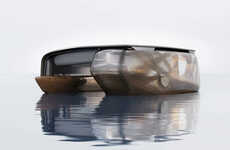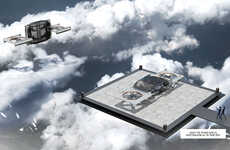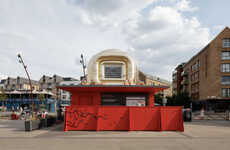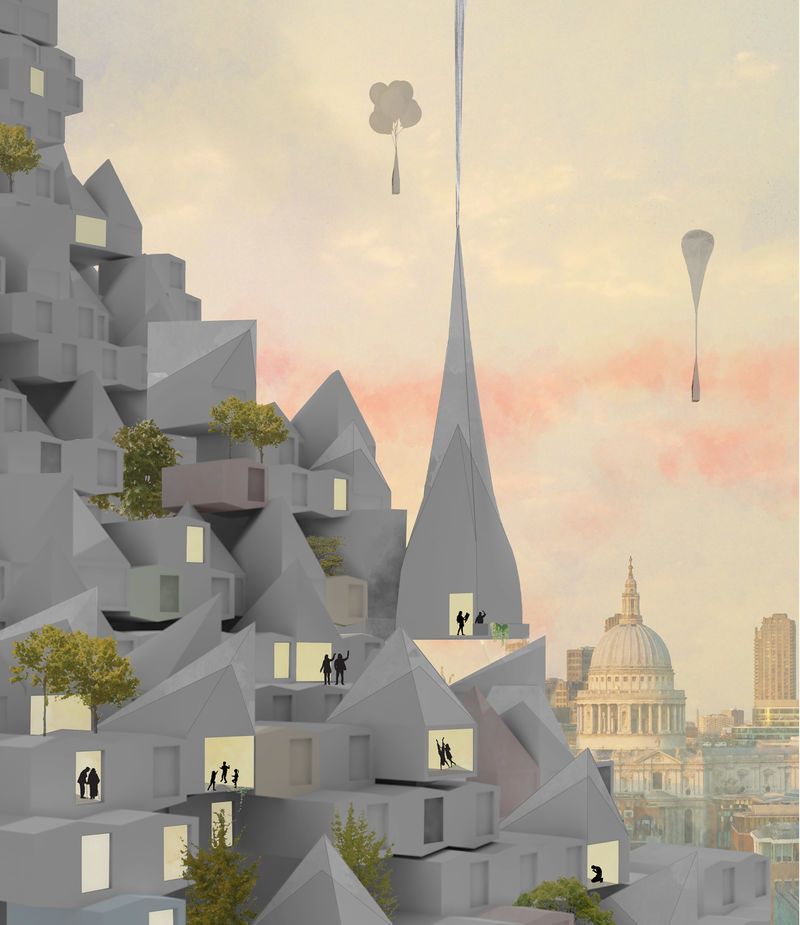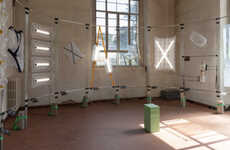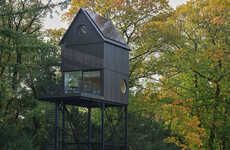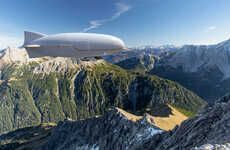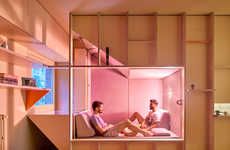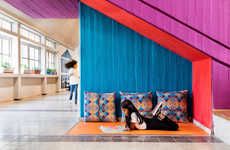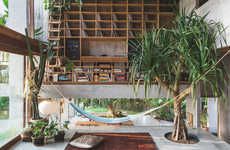
Studio McLeod & Ekkist Produce a Design That Allows Homes to Fly
Kalin Ned — February 6, 2019 — Art & Design
References: studiomcleod & dezeen
As aerial taxis are moving closer to realization, innovators in the architecture industry are pushing the development of flying houses. London-based architectural firm Studio McLeod and design consultants Ekkist's collaboration explores the possibility of such a concept.
The duo envisioned "how people could live in 100 years time" — a prompt issued by Dezeen x MINI Living Future Urban Home Competition. Dubbed 'Hour Glass,' the proposed design for flying houses boasts a hot air balloon as a catalyst for transportation. The aerial home is surely an interesting concept as it will allow individuals to efficiently move their home and travel between different environments, whether that be urban or rural.
Studio McLeod and Ekkist's flying houses draw inspiration from "the nomadic heritage of humans."
The duo envisioned "how people could live in 100 years time" — a prompt issued by Dezeen x MINI Living Future Urban Home Competition. Dubbed 'Hour Glass,' the proposed design for flying houses boasts a hot air balloon as a catalyst for transportation. The aerial home is surely an interesting concept as it will allow individuals to efficiently move their home and travel between different environments, whether that be urban or rural.
Studio McLeod and Ekkist's flying houses draw inspiration from "the nomadic heritage of humans."
Trend Themes
1. Aerial Housing - The trend of aerial housing is disrupting the architecture industry by exploring innovative concepts for mobile homes.
2. Transportation Balloons - The use of hot air balloons for transportation in housing design presents an opportunity for disruptive innovation in the aviation industry.
3. Nomadic Living - The trend of nomadic living is inspiring architects to create flying houses that cater to a flexible and adaptable lifestyle.
Industry Implications
1. Architecture - The architecture industry could benefit from the development of flying houses as it opens up new possibilities for housing design and construction.
2. Aviation - The aviation industry has the potential to embrace disruptive innovation by integrating hot air balloons as a mode of transportation for aerial houses.
3. Urban Planning - The concept of flying houses challenges traditional urban planning practices by introducing mobility and versatility in residential architecture.
3.4
Score
Popularity
Activity
Freshness


